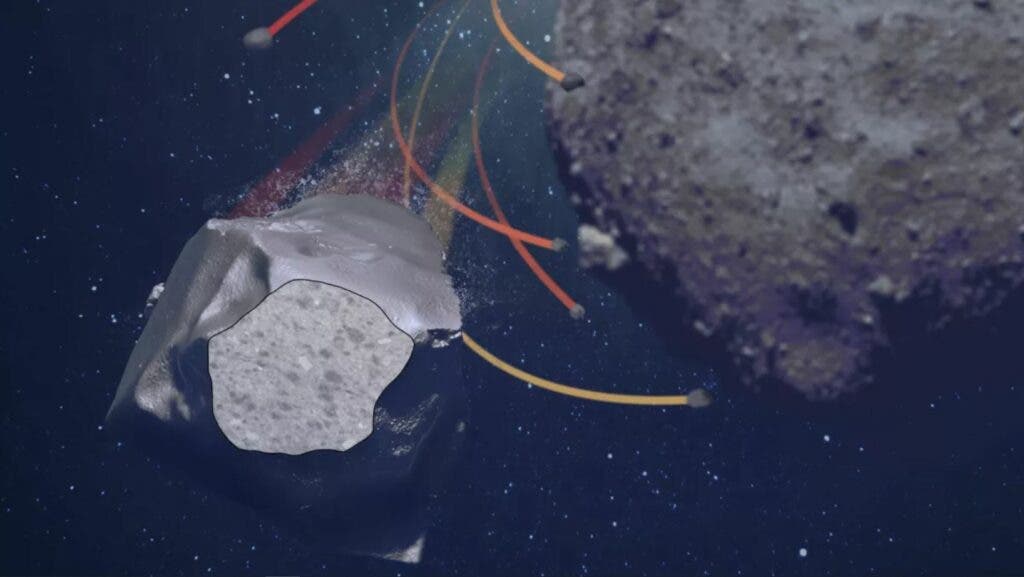Space may be chock-full of popcorn — of the pebbly kind.

Researchers examining an asteroid that landed on Earth back in 2019 report on one of the most peculiar natural phenomena we might see on the surface of space-borne rocks: pebble popcorn.
Popstones
“[The paper] provides a new way of explaining the way that minerals on the surfaces of asteroids get mixed,” Xin Yang, a graduate student at the Chicago Field Museum and the University of Chicago and the first author of the new study, said in a statement.
That being said, you probably wouldn’t enjoy eating this popcorn. The team explains that it is composed of entire clusters of marble-sized pebbles that bounce up and down the surface of asteroids, similar to corns popping on the surface of a heated pan. The findings are based on an analysis of the Aguas Zarcas meteorite, which fell in Costa Rica in 2019, but the phenomenon was first observed when NASA’s OSIRIS-REx spacecraft approached the asteroid Bennu.
In 2019, NASA’s OSIRIS-REx spacecraft spotted something amazing on the surface of Bennu. The asteroid was littered with tiny pebbles that were bouncing up and down — popcorning — on its surface.
In a bid to understand what we were looking at, the team worked with material closer to home — the Aguas Zarcas meteorite. Fragments of this meteorite, which took on a glassy sheen after experiencing the immense heat of atmospheric descent, hit the roof of a house and doghouse at the same time as the larger impact was taking place, in 2019. These fragments were what the team analyzed, with some surprising results.
“We were trying to isolate very tiny minerals from the meteorite by freezing it with liquid nitrogen and thawing it with warm water, to break it up,” Yang said. “That works for most meteorites, but this one was kind of weird — we found some compact fragments that wouldn’t break apart.”
Instead of brute-forcing the fragments apart, the team opted for a more gentle approach. They used computed tomography (CT) scans to look at the individual grains of rock that make up the fragments (these grains are known as ‘chondrules’). When such grains form in space, in the absence of gravity, they take on almost spherical shapes. But in the Aguas Zarcas fragments, they were squished — and all in the same direction. This was a dead giveaway that the chondrules had suffered impacts during their formation and the formation of the fragments they were found in.
The images recorded of Bennu’s surface helped provide some valuable context as to why. The team explains that small collisions that the asteroid experiences during space flight can dislodge pebbles off its surface, which shoot off and then fall back down due to the asteroid’s gravitational pull. Subsequent collisions can then smush this loose material back together, creating a cement-like material where minerals from all around the surface of the asteroid are mixed together.
Such discoveries go against previous assumptions that asteroids had to undergo high-speed, high-pressure collisions to reshape their surfaces, the authors explain. It seems that it doesn’t actually take very much to morph the exterior surface of these space rocks.
One possible limitation of the paper is that both Bennu and Aguas Zarcas are carbon-rich bodies that formed relatively recently. It may very well be the case that other types of asteroids behave differently.
Despite this, “we would expect this in other meteorites,” says Philipp Heck, the curator of meteoritics at the Field Museum and the study’s senior author, said in the statement. “People just haven’t looked for it yet.”
The paper “A record of post-accretion asteroid surface mixing preserved in the Aguas Zarcas meteorite” has been published in the journal Nature Astronomy.


